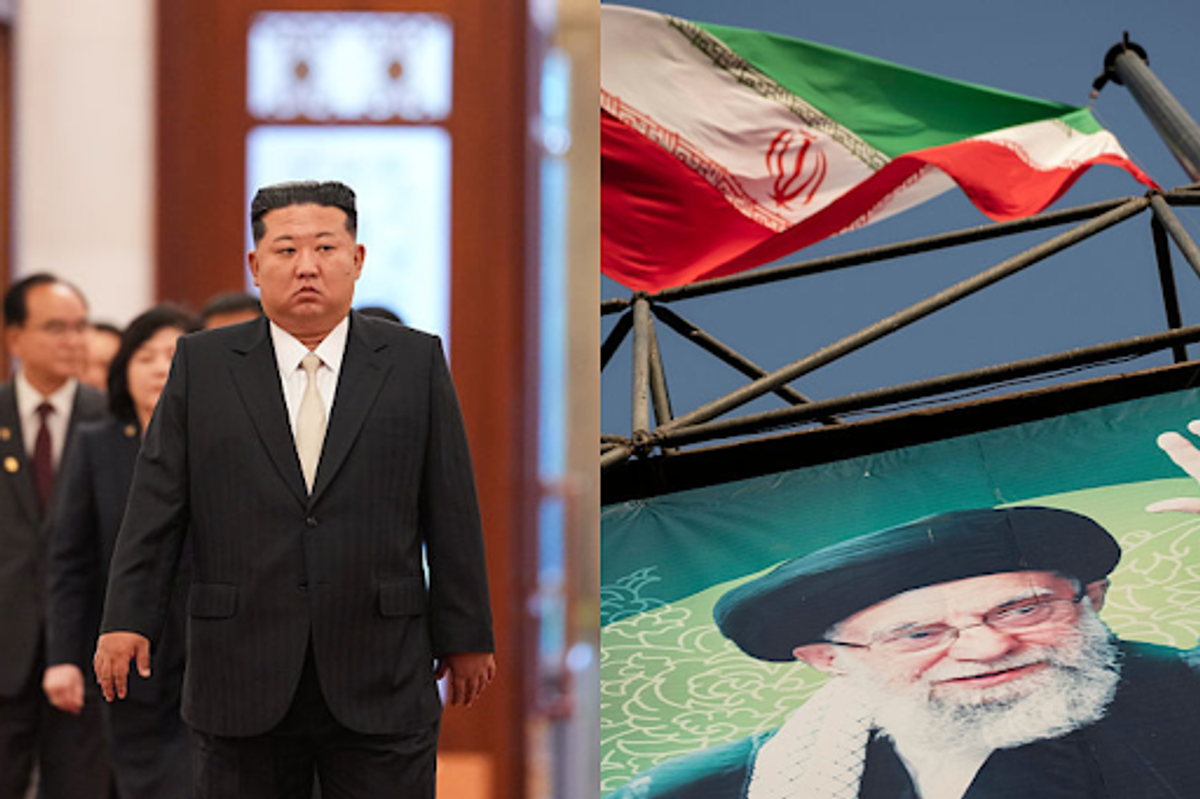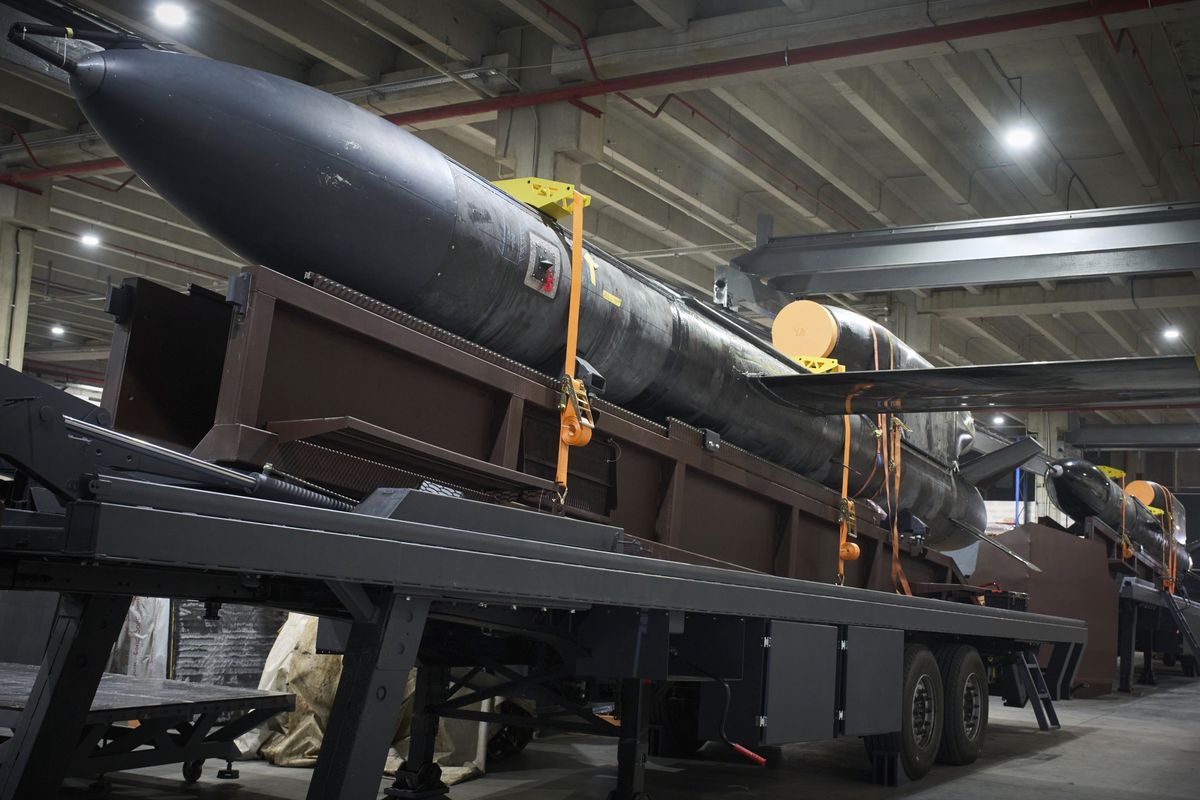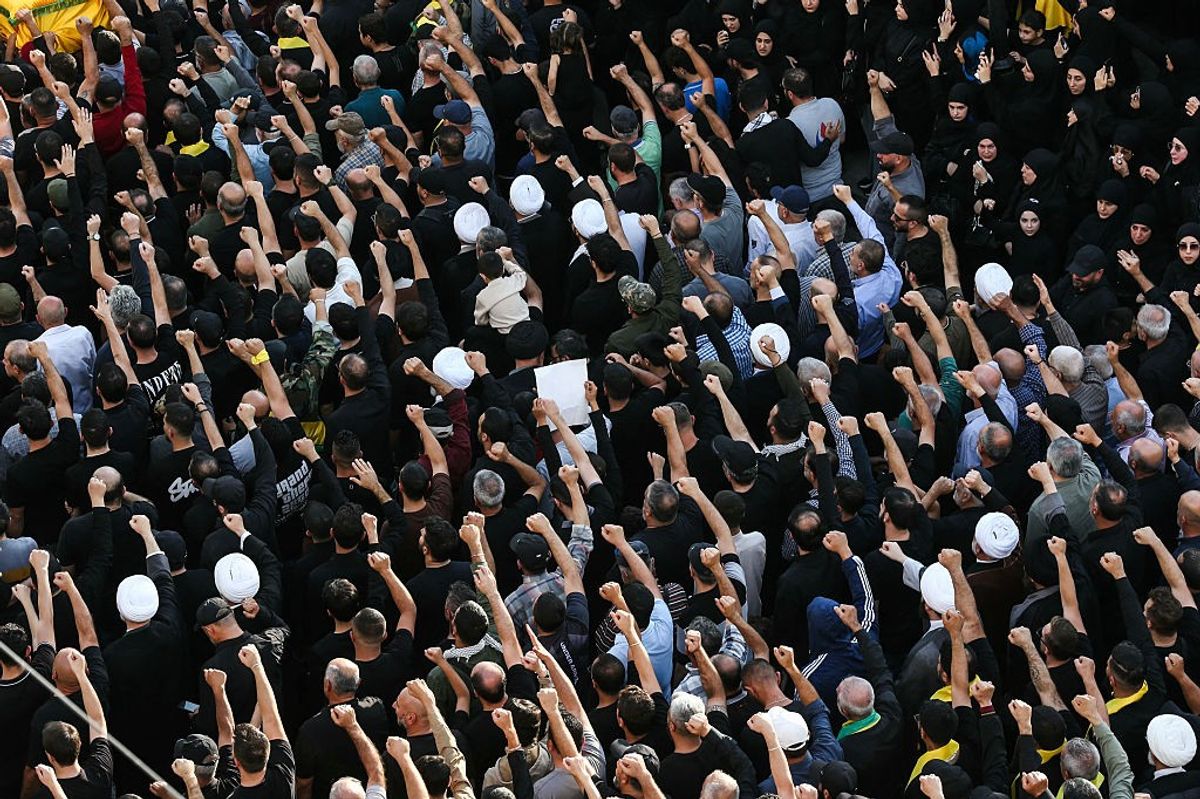DEEP DIVE — Even by the standards of the Middle East, it’s been a volatile and violent year – from Gaza to Lebanon to the unprecedented direct strikes by Iran and Israel against one another. One nation in the region where stability seemed assured was Syria – given the strong grip Syrian President Bashar Al-Assad has kept on his enemies.
That grip looks suddenly fragile, after a rebel group seized Aleppo, Syria’s second-largest city, on November 27. The rebels have since advanced on other population centers and entered the strategic city of Hama on Thursday, threatening the regime in ways that haven’t been seen in years.
Assad, who beat back a revolt during the 2011 “Arab Spring” series of uprisings against Middle East dictators, is now scrambling to fight back. His regime is getting military support from Russia and Iran, long time allies who came to Assad’s aid during the 2011 rebellion, but those countries may be limited in what they can do now. Iran has been rocked by Israel’s attacks degrading of its chief military proxies Hezbollah and Hamas, and Russia is of course busy with its war against Ukraine.
The Syria unrest is also complicated for the U.S., which has no love for Assad but is worried about what may come next. The leaders of the rebellion are Syrian Islamic militants operating under the banner Hayat Tahrir al-Sham — or Headquarters for the Liberation of the Levant — which has past links to Al-Qaeda and, under its previous name, Jabhat al-Nusra, was added to the State Department’s list of foreign terrorist organizations in 2018. There are still 900 American soldiers in Syria, who were sent there to help in the fight against the Islamic State, or ISIS, nearly a decade ago.
It is, as Norman Roule, a former National Intelligence Manager for Iran at the Office of the Director of National Intelligence, told The Cipher Brief, “one more eruption of turbulence in a region that has been jolted by tectonic political and military movements over the past year and a half.”
That “eruption” has raised a host of questions: Can Syria’s anti-regime forces turn their capture of Aleppo into something bigger and more durable? Is the Assad regime at risk? And what are the implications for the U.S. and other global players in the region?
The rebel leaders
The Hayat Tahrir al-Sham (HTS), is actually a coalition of ten armed groups that came together around 2012. According to Qutaiba Idlbi, director of the Syria Strategy Project at The Atlantic Council, the group consisted originally of Syrian fighters who fought alongside Al-Qaeda against U.S. forces in Iraq.
“They came to Syria, they established this group,” Idlbi told The Cipher Brief. “Eventually, they defected from ISIS, they defected from Al-Qaeda, and they've defected also from the idea or Al-Qaeda ideology in terms of establishing an Islamic state beyond Syria’s borders.”
National security advisor Jake Sullivan said on CNN Sunday that “HTS is actually a terrorist organization designated by the United States, so we have real concerns about the designs and objectives of that organization.” But, Sullivan added, “At the same time of course, we don't cry over the fact that the Assad government, backed by Russia, Iran and Hezbollah, [is] facing certain kinds of pressure.”
Idlbi and others say that HTS has essentially reinvented itself, working against ISIS and Al-Qaeda in northwest Syria. Dr. Patrick Clawson, research counselor at The Washington Institute, credits the HTS for having the political intelligence and flexibility to build an effective coalition.
“They really have done a remarkable job of reinventing themselves over the last decade as being much more reasonable than so many of the Islamist groups,” he told The Cipher Brief. “I'm not a great fan of HTS, but what a difference between them and so many of the Islamist groups which were ideological and weren't interested in optimizing other people and weren't interested in good governance.”
That said, the group is still a coalition of Islamic militants, and Sullivan’s concern about them is broadly shared.
“They remain a jihadist group, and…they remain a designated terrorist organization,” Idlbi said. “I think the main concern is whether HTS’s changes over the last few years were real, were permanent, and whether this increase of power would really encourage them to go back to where they were before.”
“Their religious conservatism remains,” said Clawson. “Ultimately, the test will come three or six months down the line as to whether or not HTS ends up being as kind of welcoming and as inclusive as it's claiming to be today, with it being in control of Aleppo city. The early signs are positive, but this is very early days.”
The rebel advance
Whatever their political and ideological views, the rebels have had stunning successes in their week-long rebellion.
Charles Lister, director of the Syria program at the Middle East Institute, authored a special edition of his organization’s Syria Weekly newsletter Tuesday, in which he wrote that two rebel offensives had captured at least 237 cities, towns, villages and military bases from Syria’s regime.
“In doing so, in the space of six days,” Lister wrote, “Syria’s armed opposition has more than doubled the territory under its control, with all of Idlib governorate captured, along with much of Aleppo governorate and a broad stretch of northern Hama governorate. HTS and opposition fighters have now reached Hama city, while also pushing east towards the strategic town of Ithriya in the desert south of Aleppo and east of Hama.”
While specific casualty counts aren’t known, Lister’s organization and media reports suggest hundreds of combatants have been killed and injured. As many as 200 pro-regime soldiers and militiamen have reportedly been captured, and opposition groups have seized enough weaponry and ammunition to last months, if not years of fighting.
Retreating Syrian forces “had abandoned a massive amount of ordnance, anti-tank guided missiles, MANPADS,” Roule said – a trove of weaponry that the rebels have presumably taken.
“These are truly game-changing developments,” Lister wrote, “though the precise consequences for Syria overall, and for the regime’s survival, remain to be seen.”
On Thursday, HTS said it had entered Hama, a major city 115 miles north of Damascus that straddles the route Iran has used to move arms to Hezbollah in Lebanon. The rebel group issued a statement saying it had "control over new neighborhoods inside Hama city.” The Syrian army appeared to confirm its startling loss, issuing its own statement saying that “military units stationed there have redeployed and repositioned outside the city” in order to “preserve the lives of civilians.” “Over the past few hours, with the intensification of confrontations between our soldiers and terrorist groups and the rise of a number of martyrs in the ranks of our forces, these groups were able to penetrate several axes in the city and enter it, despite suffering heavy losses in their ranks,” the army statement said.
According to the Washington Post, HTS said it freed the inmates of Hama’s Central Prison. “Hafez al-Assad entered Hama with tanks and robbed from its people,” the group said, referencing a brutal government crackdown in Hama in 1982. “Today we entered it with tanks and are returning it to its people.”
Can Iran, Hezbollah and Russia save Assad?
In different ways, Russia, Iran and Hezbollah – Iran’s most potent proxy force – have provided military backing to Assad, sometimes to great effect. Now, however, Russia is distracted, and Iran and Hezbollah have both been weakened by the conflict with Israel – Hezbollah badly so.
“Keep in mind that for many years the Syrian government has been engaged in a civil war backed by three main players: Iran, Russia and Hezbollah,” Sullivan said. “All three of those players have been distracted and weakened by conflicts elsewhere.”
Hezbollah, which intervened on Assad’s side during Syria’s civil war, starting in 2011, has already said that it would not send troops to Syria. That’s no surprise, given that their leadership and arsenal have been decimated by the Israelis.
Iran’s Foreign Minister Abbas Araghchi met with Assad in Damascus Sunday, and is reported to have agreed to consider sending troops if Syria requested them. Iran’s president, Masoud Pezeshkian, spoke to Assad by phone Monday and expressed “confidence in Damascus’ ability to prevail,” according to Iranian state media.
In 2015, Russia intervened militarily to help Assad’s government hold off armed opposition groups and reclaim control over most of Syrian territory. Russia has maintained an airbase and naval facility in Syria, and last July, Assad traveled to Moscow for a meeting with Russian President Vladimir Putin at the Kremlin. On Monday, the Kremlin said that Russia still supported Assad and was analyzing the situation to see what help was needed.
Some Russian help has already come. The Syrian Prime Minister's office said that Russian and Syrian aircraft were striking rebel-held positions in Aleppo's eastern countryside. And on Wednesday, according to the Voice of America, rebels retreated from the outskirts of Hama after a government counteroffensive backed by Russian air strikes.
Hama is considered key to the defense of Damascus and is on the route to the coastal cities of Latakia and Tartus. The latter town hosts a strategic Russian naval base.
“All the manpower that the regime can get at this point will help,” Lister said of the Russian and Iranian assistance.
There is another side of the picture here,” Lister said, “which is that the HTS and various other opposition groups only have so much manpower at their disposal. If they continue to try to push too deep or further deeply into Syria, they risk overstretching themselves and making themselves very vulnerable to a counterattack.”
Assad’s future
Beyond the Syrian military’s inability to hold Aleppo – and other territory – the rebels’ successes have surfaced deeper problems within the Assad regime and its allies.
“This is a terrible intelligence failure for the Syrians, the Russians, and the Iranians simultaneously,” Roule told The Cipher Brief. “This attack tells you an awful lot about their capabilities in the region, how thinned out they were, and in some ways it's a systematic failure, not dissimilar to October 7th in Israel.”
Lister says there were ample signs that the rebel offensive was coming. In the special edition of Syria Weekly, he wrote that “beginning in early-September, senior military leaders from a coalition of 10 armed factions based primarily in Idlib had been meeting to plan a major assault into western Aleppo. Their goal was to remove the regime’s expansive artillery launching zone west of Aleppo – from where it had sustained years of daily indiscriminate shelling of civilian communities – and create an opposition stand-off threat to Aleppo city.”
He added that according to two well-placed sources within the rebel coalition, news of the plans leaked to Turkey’s National Intelligence Organization, or MIT, prompting a swift and decisive Turkish intervention – including two meetings in Idlib and several in Turkey – that put the plans on hold.
While the rebellion has laid bare military and intelligence failings, experts doubt that the regime is in danger.
Lister and others said that Assad may be waiting for the the rebels to “thin themselves out” before launching a major counteroffensive. “We're going to see how this plays out in coming days,” he said.
“Although the Syrian regime does not appear in danger of falling, how and whether and to what extent Iran and Russia respond will shape events in the region for the foreseeable future,” Roule said.
The U.S. response – and American troops in Syria
Those American troops in Syria have been there since 2014, a deployment that was aimed at defeating the Islamic State of Iraq and Syria, which had captured territory in both countries and claimed control of a caliphate from Aleppo in Syria to Diyala in Iraq.
A U.S.-led coalition launched airstrikes against ISIS in Iraq in August 2014 and expanded to Syria in September of that year. The mission, named Operation Inherent Resolve, conducted some 8,000 airstrikes over the next several months. Ultimately, the mission scored decisive victories over ISIS in Iraq and Syria, and by December 2017, the group’s “caliphate” had shrunk by 95 percent. Iraqi Prime Minister Haider al Abadi declared victory over ISIS in Iraq in December 2017; a year later, President Donald Trump declared ISIS defeated.
The Trump and Biden administrations maintained a limited U.S. troop presence in Iraq and Syria, mostly as advisors. According to the Pentagon, the U.S. currently has a military presence of about 2,500 American personnel in Iraq and about 900 in Syria, a deployment aimed at assuring that ISIS cannot rebuild in those countries.
“The terrorists no longer rule territory, but the ideology espoused by the group continues,and there is still a need for the coalition,” Alan Matney, the Defense Department’s coordinator for the Global Coalition to Defeat ISIS, said in an interview posted on the Pentagon website in October. "I think if we've learned anything over the last 10 years of the coalition, then I would argue that this threat does not go away: It changes and it adapts.”
On Monday, Pentagon press secretary Maj. Gen. Pat Ryder told reporters, “The U.S. is in no way involved in the operations you see playing out in and around Aleppo in northwestern Syria. We remain fully prepared to defend and protect our personnel and assets deployed to the region.”
The New York Times quoted an unnamed senior U.S. official saying that on Friday, there was a brief confrontation between Syrian government troops and U.S. troops. Syrian government troops fired on a local American base, and U.S. forces returned fire, but the confrontation did not escalate.
What should the U.S. do now?
Clawson said the U.S. should try to influence HTS to maintain its moderation.
“If I were advising the incoming administration, I would say that they ought to set forth the things which they think the HTS has to do to get off the [U.S.] terrorism list,” Clawson said. “Tell them what they have to do to get off the list.”
Roule said the U.S. can be expected to maintain a wary stance toward the rebels.
“The idea of Islamic militants in charge of such central geography would be a terrific and consequential complication to the region, touching countries such as Saudi Arabia, Israel, Turkey, Jordan,” Roule said. “The list just goes on and on and on, of why you would want stability in Syria.”
Ethan Masucol contributed reporting.
Read more expert-driven national security insights, perspective and analysis in The Cipher Brief.











